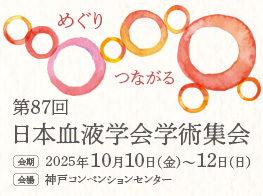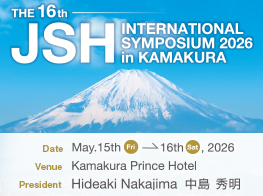
名前:嬉野 博志【佐賀大学 医学部 血液・腫瘍内科】
発表形式:e-Poster
Title:
HLAs polymorphisms predict treatment free remission following TKI discontinuation in patients with chronic myeloid leukemia
Authors:
Hiroshi Ureshino1,2, Takero Shindo3, Hiroto Kojima4, Yasushi Kusunoki4, Hidenori Tanaka4, Hiroh Saji4, and Shinya Kimura1,2
Affiliations:
1. Division of Hematology, Respiratory Medicine and Oncology, Department of Internal Medicine, Faculty of Medicine, Saga University, Saga, Japan
2. Department of Drug Discovery and Biomedical Sciences, Faculty of Medicine Saga University, Saga, Japan
3. Department of Hematology and Oncology, Kyoto University Graduate School of Medicine, Kyoto, Japan
4. HLA Foundation Laboratory, Kyoto, Japan
Abstract:
Background: Treatment-free remission (TFR) is one of the therapeutic goals for patients with chronic phase chronic myeloid leukemia (CML-CP); however, the factors that predict TFR are unclear. Cancer immunosurveillance can play an important role in achievement of TFR in patients with CML-CP. We previously reported allelic polymorphisms of killer immunoglobulin-like receptors (KIRs) and human leucocyte antigens (HLAs) (non-interactive combination of KIR3DL1 and HLA) using next generation sequencing (NGS) were associated with favorable achievement of deep molecular response (DMR) and increased number of NK cells were favorable prognostic factor for TFR in patients with CML-CP. There is no detailed analysis of the polymorphisms in KIRs and HLAs in CML patients after discontinuation TKIs has been undertaken.
Aims: The aim of this study was to undertake subgroup analysis to examine the association between TFR and HLA and KIR polymorphisms in patients that discontinued TKIs, and to compare the results with those obtained after genotyping of KIRs and HLAs.
Material and Methods: Patients with Philadelphia chromosome-positive CML-CP (n = 76) who were treated with TKIs (imatinib, dasatinib, or nilotinib) between April 2002 and August 2017 at Saga University Hospital were enrolled. NGS of DNA from the patients was performed to evaluate the association between KIR/HLA polymorphisms and TFR. Allelic genotyping of HLA and KIR genes was performed by NGS of DNA samples using Illumina MiSeq technology. The activation status of NK cells was evaluated by flow cytometry analysis of CD107a degranulation and intracellular IFN-g secretion by CD3-CD16+CD56+ NK cells, co-culture with K562 cells (lacking HLA). This study was approved by the institutional review board of Saga University (UMIN-CTR, ID: R000020356).
Results: A total of 33 of 76 [63.6%; 95% confidence interval (CI), 44.9–77.5%] at 1 year CML-CP patients discontinued TKIs. Multivariate analysis identified male sex [HR, 0.162; 95% CI, 0.034–0.884; P=0.0021] and HLA-A*02, *11, or *24 [HR, 5.252; 95% CI, 1.323–18.106; P=0.009] as independent favorable prognostic factors for TFR in patients with CML, while KIR allele and KIR/HLA combination did not affect. Patients who discontinued TKIs exhibited higher levels of CD107a degranulation (p=0.030) and secretion of IFN-g (P=0.087) than patients who did not. By contrast, there were no significant differences in CD107a degranulation and IFN-g secretion between patients who achieved TFR and those who experienced molecular relapse. Moreover, increased number of central memory or effector memory T cell fractions in CD4+ T cells were observed in patients who achieved TFR than patients with molecular relapse. These results suggest that NK cell activation may contribute to achievement of DMR, rather than TFR. Patients without HLA-A*02, *11 or *24 may not produce cytotoxic T-cell against CML (HLA restricted tetramer), leading to insufficient T-cell mediated immune response against CML. These suggest T-cell mediated immune responses may be involved in sustained TFR in CML rather than NK cell. Considering the previous reports and the results, NK cell mediated immune response may be involved in deeper molecular response with TKI treatment in patients with CML, suggesting innate immunity may be important in patients with CML leading to DMR, while T-cell mediated immune response (adaptive immunity) may be contributed to TFR.
Conclusion: In treatment for patients with CML, NK cell mediated immune response may have important role in initial treatment (until DMR), while T-cell mediated immune response may have important role in late CML regulation (TFR phase).



